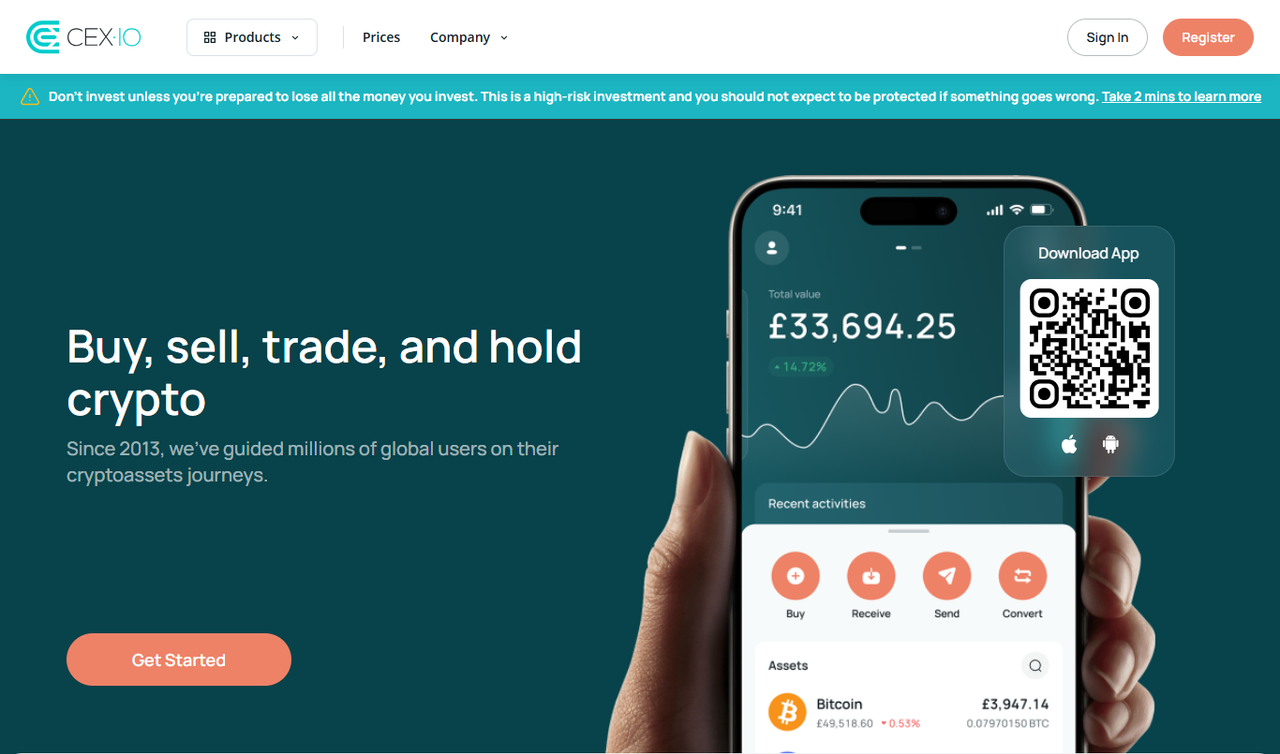What is Cex exchange?
Cex exchange is an online cryptocurrency trading platform that enables users to buy, sell and store a wide range of digital assets. Whether you're placing spot orders, checking market depth, or using advanced order types, Cex exchange provides the tools traders need. This guide focuses on practical steps so you feel confident using Cex exchange for everyday trading.
Step 1 — Account creation and verification on Cex exchange
Getting started with Cex exchange begins with signing up using a valid email address and creating a strong password. After signup, expect to complete identity verification (KYC) to unlock higher deposit and withdrawal limits and access all trading features. Prepare a government ID and a selfie for verification—these are common requirements on Cex exchange to comply with regulations.
Tip: Use a unique password and enable two-factor authentication (2FA) immediately after creating your Cex exchange account.
Step 2 — Securing your Cex exchange account
Security should be your top priority on Cex exchange. Enable 2FA (Google Authenticator or similar), set up withdrawal whitelist addresses, and avoid using the same password across services. Consider keeping the majority of long-term holdings in a hardware wallet and only keeping trading funds on Cex exchange.
Essential security checklist for Cex exchange
- Enable 2FA and backup the recovery codes.
- Verify withdrawal email notifications and confirm withdrawals manually.
- Use a hardware wallet for large balances and only transfer small amounts to Cex exchange for trading.
- Beware of phishing: always confirm you're on the official Cex exchange domain before entering credentials.
Step 3 — Deposits, withdrawals and wallet management
To fund your Cex exchange account, navigate to the deposit page, choose the asset you want to deposit, and follow on-screen instructions. When depositing fiat, use supported payment rails listed by Cex exchange. For crypto deposits, generate the correct deposit address—double-check the network and memo/tag fields when required.
Withdrawals from Cex exchange follow the same precautions: add and confirm withdrawal addresses, review fees, and enable withdrawal whitelists wherever possible.
Step 4 — Trading basics on Cex exchange
Cex exchange typically offers market, limit, and stop orders. Market orders execute immediately at current prices, limit orders let you set a desired price, and stop orders can help manage risk. Beginner traders should start with small sizes on Cex exchange while learning how order books and liquidity affect execution.
Pay attention to trading pairs and base/quote currencies—for example, BTC/USD or ETH/USDT—when placing trades on Cex exchange to avoid accidental purchases of the wrong asset.
Fees and costs to expect on Cex exchange
Every trade and transfer on Cex exchange may incur fees: trading fees, deposit/withdrawal fees, and sometimes conversion or bank fees for fiat transactions. Review the fee schedule on Cex exchange's official site before large trades. Lower fees are often available for higher-volume traders or when using native tokens for fee discounts if Cex exchange supports them.
Advanced features and tools
Many users of Cex exchange benefit from advanced features like margin trading, stop-loss/take-profit orders, API access, and portfolio trackers. If you plan to use margin, understand leverage and liquidation mechanics—margin amplifies both gains and losses. Use demo or small-size trades when trying new features on Cex exchange.
Common mistakes to avoid
New users on Cex exchange often make avoidable mistakes: not enabling 2FA, sending funds to the wrong network, overleveraging on margin, or falling for phishing links. Keep copies of transaction IDs, double-check addresses before sending, and never share your private keys or recovery phrases with anyone—even if someone claims to be Cex exchange support.
Quick-start checklist for using Cex exchange
- Create and verify your account on Cex exchange.
- Enable 2FA and set withdrawal whitelists.
- Fund your account using the correct deposit instructions.
- Start with small trades to learn the platform.
- Monitor fees and move long-term holdings to cold storage.
Conclusion — Is Cex exchange right for you?
Cex exchange is a useful platform for anyone wanting to trade cryptocurrencies, from beginners to advanced traders. Its value depends on supported assets, fees, liquidity, and the security measures you put in place. By following this guide—account setup, strong security, careful deposits and withdrawals, and cautious trading—you can use Cex exchange with greater confidence and safety.
If you are new to crypto, combine your Cex exchange activity with learning resources and small practical experiments. Over time you’ll understand order books, fee structures, and how to manage risk effectively on Cex exchange.
